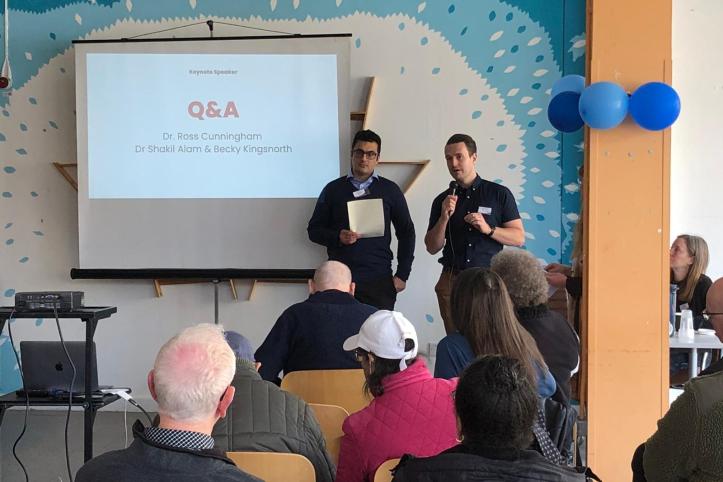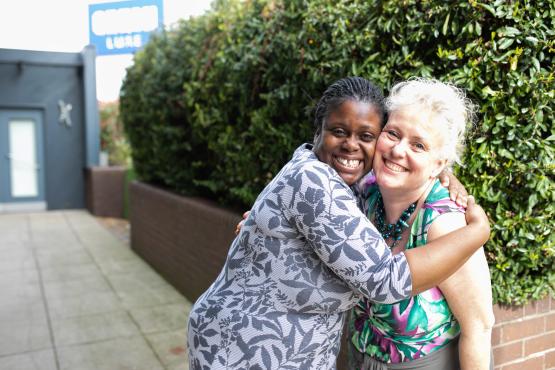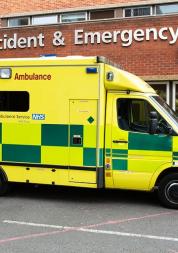Enter and View - Charles Coward Ward, North Middlesex University Hospital
Healthwatch Enfield has the authority to carry out Enter & View visits in health and social care premises to observe the nature and quality of services. This is set out in Section 225 of the Local Government and Public Involvement in Health Act 2007.
In June 2019, COGS –a social enterprise that holds the contract for Healthwatch Enfield, was approached with a request to gather experiences of those staying on, visiting or working in eight wards at North Middlesex University Hospital NHS Trust.
These visits raised some concerns about patient experience on Charles Coward ward, which were raised directly with the Trust and reported to the Care Quality Commission (CQC) at the time.
Following discussions with senior leadership team at the North Middlesex University Hospital Trust, a number of improvement measures were immediately put in place by the Trust for Charles Coward ward.
It was agreed that Healthwatch Enfield would then conduct an unannounced Enter and View visit to that ward to see if there had been improvements in patient experience as a result of the measures put in place.
Healthwatch Enfield’s Enter and View Authorised Representatives have statutory powers to enter publicly funded health and social care premises to observe and assess the nature and quality of services and to obtain the views of the people using those services.
Overall, statistical analysis indicates that there have been improvements in patient experience on Charles Coward ward since July 2019. Taking note of the differing sample size fo reach visit, care must be taken when interpreting the quantitative data. This data serves to illustrate general trends only.
Our findings suggest that overall, during our visit in October 2019, a higher percentage of patients reported the following, compared to our visit July 2019:
- Being given information when they were admitted to the ward
- Knowing who their named doctor is
- Knowing when they are due to go home
- Knowing what is going to happen to them today or tomorrow
- Feeling involved in decisions about their care
- Knowing how to raise concerns or make a complaint
- Being encouraged to get dressed and out of bed
- Receiving help quickly when calling staff
- Staff being kind and caring
- Finding the ward to be a clean and calm environment
A lower percentage of patients reported:
- Knowing if they have any tests planned
- Knowing that they can choose different types of food▪Getting a good night’s sleep on the ward due to the level of noise
The same percentage of patients reported:
- Awareness of the Friends and Family test (0%)
- That they thought the food was ‘tasty’ (33%)
Following our visit, we made 7 recommendations (available in full report).
We found that there had been improvements on Charles Coward ward since our last visit in July 2019, and patients, visitors and staff seemed relatively happy. Overall, staff were doing their best to provide safe, good quality care to their patients, in a ward with more patients than it was designed for.
However, from listening to patients and their loved ones, they told us they felt the staff were too busy looking after too many patients to provide the best care possible to their patients. This was echoed by staff, who informed us that their working conditions result in them not being able to give the level of care they would like to. They explained how much better it was when the bed capacity on the ward was reduced for a few weeks and felt strongly that this reduction should be put back into place permanently. Not only did staff tell us about not having enough time to attend to patients with the increased number of beds, but they also told us about not having adequate physical space around patients’ beds to give them the care they need, particularly whilst using hoists and resuscitation equipment.
There seemed to be a distinct lack of activity on the ward. Patients were sat by their beds, in their pyjamas, unable to experience brief interaction with staff due to the staff being so busy. Patients did not have access to simple entertainment such as TV and Radio, unless they bought in their own, and expressed a desire to have these available to help them pass the time whilst on the ward. The ward has space and resources to provide activity for patients, but these were not utilised. Volunteers had previously been available to interact with patients, but this is no longer the case due to there being one volunteer working on the ward, who only visits once a week.
Although our visit did confirm that improvements have been made on Charles Coward ward since our previous visit, it is clear that there are still remains a need for further improvement.



